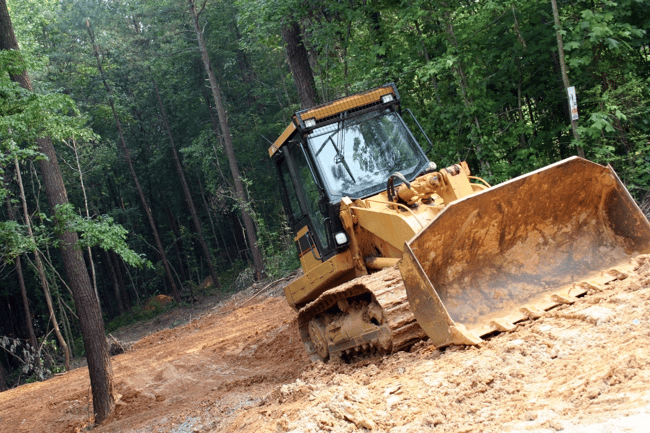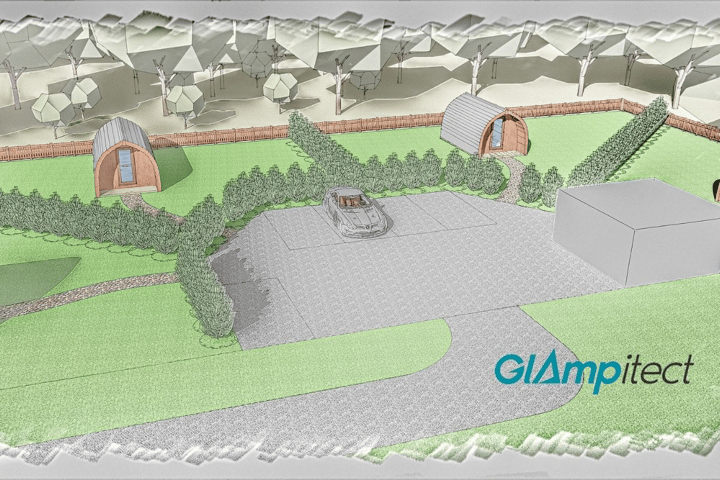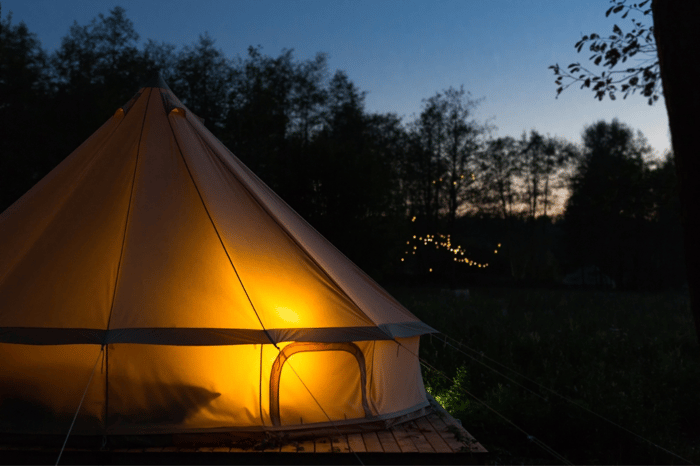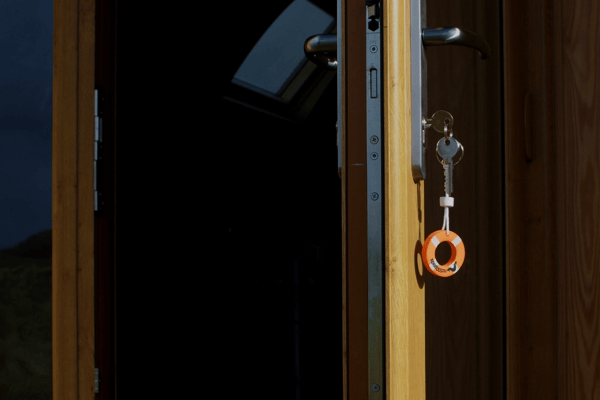Setting up Permanent vs. Popup Glamping Sites
Created by William Louden Published on

During the current boom in glamping it has become clear there are two main types of glamping business:
- Permanent glamping sites which remain open for most of the year.
- Temporary or ‘popup’ glamping sites that feature moveable units only setup during brief periods at certain times of year.
The decision whether to go permanent or popup can be influenced by various things.
This could be down to personal preference depending on how much time you can dedicate to managing the site. Your glamping business could be seasonal in nature and only require to open at certain times; examples include summer campsites or events accommodation. The design of your site may necessitate permanency if it uses units that cannot be moved like glamping pods. Or the decision could be a practical one; many believe that by opting for a popup glamping site they can avoid the time and expense involved in having planning permission approved.
Do I Need Planning Permission for Popup Glamping Sites?
The main challenge for setting up a permanent glamping site is having planning permission granted. It is usually necessary to seek support from a professional organisation like Glampitect or a local planning consultant for what is a complex and lengthy process.
It is worth understanding some of the legal measures that can mean your popup glamping business will not require planning permission.
The primary conditions to meet:
- The site must only feature structures and/or units that are temporary and moveable.
- No operational development works can take place on the land; such as engineering works, installation of utilities such as water or electricity, ground formations, roads, waste management facilities, offices, lighting etc.

Under these conditions, most glamping pods will need planning permission due to requiring construction works as well as not being transportable. A popular moveable glamping unit is the shepherd’s hut that is on wheels. It pays to be aware that you will still encounter difficulty having these units on your site without operational development works, as they will be required to setup any services such as water or electricity.
Legally speaking if you wish to change the use of land for any purpose, especially if it involves any construction works, the development will either need to have planning permission granted or fall under permitted development.
What is Permitted Development?
There are two reasons why a landowner may not require planning permission to change the use of land or to build on the land. Either the land falls under lawful use in that it serves a legal purpose which is not bound by planning law; or works on the land are classed under permitted development rules.
Glamping units can only benefit from permitted development rights if no operational development works have been carried out at the site. Whether a construction operation falls under operational development depends on factors such as: size, permanence and physical attachment to the ground. Advice should be sought if you are unsure if any construction works planned are allowed under permitted development. Glampitect can advise on this if you wish to get in touch or you could approach your council for an informal chat.

Permitted development rights are not applicable to areas near listed buildings; European conservation areas; or sites of historical, scientific or natural importance. Advice on planning permissions should be sought if your site falls into one of these areas.
The main fall back for glamping sites operating under permitted development is to do with the amount of time the site can open for business. Not only do sites have to feature moveable units, but these can only be on site for a short period of time.
Traditionally this has been for any 28 days in the calendar year and is known as the 28 day rule, but there have been some changes to permitted development in 2020 as to how and when this rule applies.
The 28-day rule and 56-day rule
The 28-day rule has been temporarily extended to 56 days in England and Wales to give the industry a boost whilst coming out of lockdown. In Scotland, the 28-day rule is still in place but planning authorities are being encouraged to allow ‘temporary breaches of planning control’ i.e. beyond the restrictions of permitted development rights:
"In line with the wider approach to relaxing planning control at this time, and for the avoidance of doubt, we do not expect the limits of the 28-day rule to be enforced against reasonable temporary outdoor uses, which may include temporary structures, should a longer period be appropriate and helpful to businesses."
- Coronavirus (COVID-19): planning - use of outdoors spaces and 'the ‘28-day rule', Scot Gov July 2020
Northern Ireland has similar legislation as Scotland with authorities being encouraged to not enforce permitted development law in cases where there is reasonable justification.
Note that under permitted development rules any structures on the land will count towards the annual allowance, meaning that the setup time of your glamping site will count towards the 28 or 56 days regardless if it is open or not.
There is no requirement to use the time in consecutive days. However, the land must be returned to its original state during the time it is not being used meaning it may be impractical to spread the time across different periods in the year.
Site Licences
Even under permitted development, your glamping site may still need a site license to operate without planning permission. A campsite or caravan site license may be required to operate for 42 consecutive days or up to 60 days within the calendar year even if you qualify for 28-day or 56-day rulings.

This will be applicable to any site that features tents under a campsite license. This may be avoidable in certain circumstances in Scotland where legislation protects against wild camping. You should also take care to find out whether your glamping units fall under the legal definition of a caravan in case you require a caravan site license. Many units are manufactured specifically to these requirements to take advantage of more relaxed planning rules than built accommodation. Many pods, shepherd's huts, gypsy caravans and moveable lodges fall into this camp. You should be able to ascertain this information from your manufacturer, or feel free to reach out to Glampitect for info on our recommended manufacturers.
Summary

If you wish to create a sustainable income year-round, it is not practical to operate without planning permission in consideration of the short period of time in the year you are able to open. Undertaking any construction or engineering work to setup services at your site will often mean you will not quality for permitted development. In this sense, the 28-day rule is far less practical for a glamping site than a campsite or market that may not require utilities.
The quickest and most cost-effective method to determine whether your glamping site is likely to have planning permission approved and provide a sustainable income is by conducting a feasibility study.
If you wish to open for 28 calendar days in the year or less, it is worth looking into whether your site will be feasible under permitted development rights. Tread carefully with operating under the UK’s relaxed planning legislation in the current climate as these laws will likely be made redundant as the region’s lockdown restrictions ease up. No one wants to be in the situation of having just completed construction at your site for planning laws to change making your site unviable!
Stay tuned for more detailed info on the 28-day rule and other factors relevant to popup glamping sites.